
10 minute read
Tips For Taking The Best Photos in Okoboji
Drone Photography
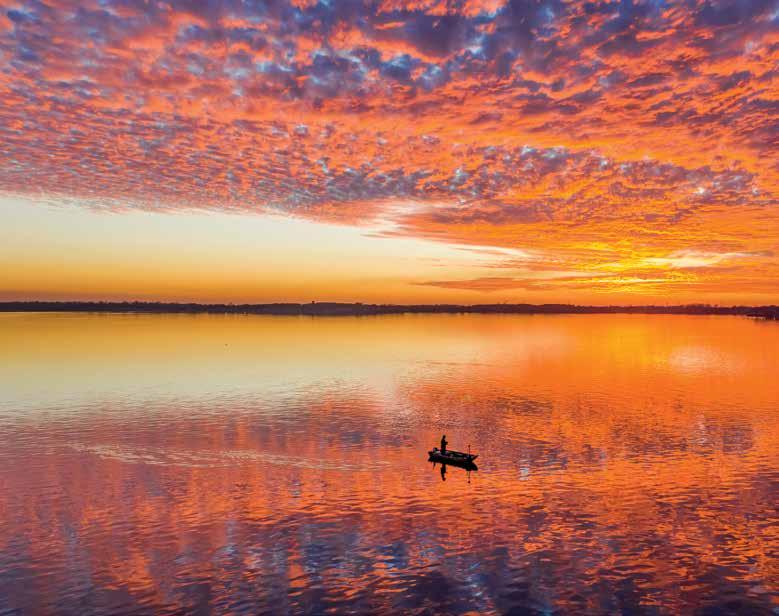
First thing is safety and legality. Make sure flying in your specific location is legal with the FAA airspace and the local ordinances. Make sure your takeoff and landing spot is safe from people. [Note: It is illegal to fly over people]
Have a general idea before taking off what your subject is. Also have your drone’s camera settings in place so you’re not fumbling around in the air doing it and therefore wasting flight battery time.
The name of the game with drone photography is variety. You will want to change altitude, angles, and distances from the subject to get different looks of the subject because you may find the most pleasing composition is different than what you originally thought.
The BEST composition is the one pleases YOU the most! If you find a particular composition fascinating, beautiful, or fun then you’ve taken a good shot!
Land safely with enough battery power left so you’re not stressed in the process.

Tom Gustafson:
Tom Gustafson was one of the first professionally licensed drone pilots in the United States and has thousands of flight hours photographing Okoboji and many other places domestically and internationally. He’s published 10 books of drone photographs and continues to create more. He has been featured in magazines, travel guides, and on television. You can see more of his work here: Facebook: Drone Photographs By Tom Gustafson
Instagram: @tom.gustafson visionAIRydrone.com
Three quick tips for better “at the table” food photography
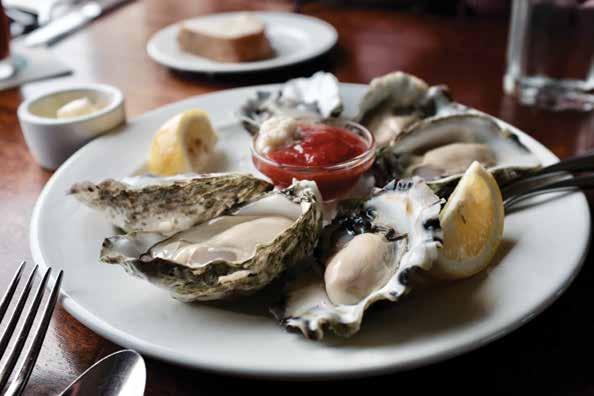
Lighting
Light is always the first thing you should think about when shooting food. Flash is never a great idea. Indirect window light or natural light is your best bet. Sidelight works well and adds interest and shadows. (Don’t be afraid of shadows, they add interest!)
Angle
Most foods that have some dimension look better at a 45-degree angle, while others that are flatter look better from the top down. For example, a delicious piece of strawberry pie usually looks better at an angle, but pizza usually looks best from the top.
Composition
Try your best to isolate the most important piece of food you want to highlight. You can shoot the whole plate, but if there’s something that really stands out to you, don’t be afraid to put your phone into portrait mode and zoom in. Doing this can highlight your favorite part of the dish.
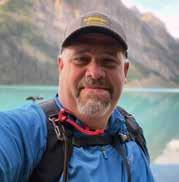
Chris Baker
Photographer Chris Baker is a co-founder and partner at F8 Creative in Spencer. F8 provides commercial photography as well as video production, graphic design, and web design services to businesses and organizations of all sizes.
f8creative.com|
Instagram: f8creative
Instagram: christopherbaker.71
Shooting photos at night

Night photography can be intimidating, here are a few tips to get you started!
1. Use a sturdy tripod and a timer to prevent camera movement.
2. Open the Aperture to let in light, then use Shutter Speed and ISO to expose the image properly, with a goal of keeping the ISO low to decrease image “grain/noise”.
3. Focus on the farthest light source for the best focal depth.
4. Use photo planning apps like PhotoPills to find the timing of sunrises, moonsets, Milky Way visibility and more to increase your chances of success.
5. Shoot in a RAW file format to give yourself editing superpowers when using editing software such as Adobe Lightroom, to adjust the lighting and colors of your photo to your heart’s content.
Camera Setting Examples:
Fireworks:
2 - 10 seconds
f2.8 - f8
ISO 100
Stars:
10-30 seconds
f1.4 - f4
ISO 100 - 8000

Ben Ford
Ben Ford is a professional landscape photographer from Cedar Rapids, Iowa specializing in outdoor, night and travel photography. After buying a digital camera in 2013, one of his first photos was of the Arnolds Park ferris wheel at night, and he’s been in love with night photography ever since.
Ben has had family ties to the Iowa Great Lakes since 1921, when his great, great grandfather Frank Hutchinson of Hutchinson Ice Cream (later Borden’s Ice Cream), started supplying to Ice Cream Parlors at Arnolds Park, namely the Park Theatre. That same year Frank purchased a property in Okoboji, which remains in the family to this day. You can find Ben’s photography available locally at Mary’s Gift Shoppe in Spirit Lake, Iowa or on his website: BenFordPhotography.com Instagram: @mr._ford | Facebook: facebook.com/BenFordPhoto
Tips for AMAZING Senior Photography
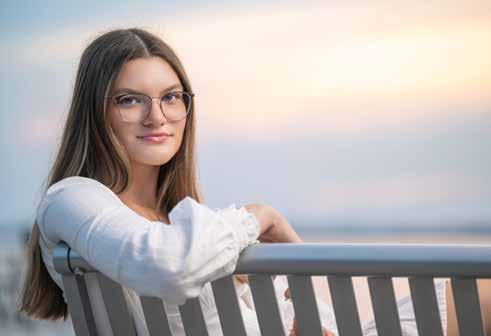
LOCATION: We like to choose a location that reflects the Senior’s personality and interests. It could be a favorite park, urban area, or even their school football field or building.
WARDROBE: We encourage Seniors to wear outfits they feel comfortable and confident in. Solid colors or simple patterns that won’t distract from their face usually work the best.
LIGHTING: Golden hour, the hour after sunrise or before sunset, provides beautiful soft light. Aim for natural light and avoid harsh shadows. The exception to this is our ability to use off camera flash. This allows us to photograph any time of the day to create dynamic portraits of your Senior and make them stand out from their background.
POSES AND EXPRESSIONS: Use natural and relaxed poses that capture the Senior’s personality. We guide them with prompts to evoke genuine emotions and expressions.
PROPS: Incorporate props that are meaningful to the Senior, such as sports equipment, musical instruments, or hobbies they enjoy. These props add a personal touch to the photos.
CANDID MOMENTS: Capture candid shots in between posed shots to capture the Senior’s true personality and emotions. These spontaneous moments often result in the most genuine and memorable photographs.
COLLABORATION: Involve the Senior in the creative process. Ask for their input, ideas, and preferences. This collaboration will help them feel more comfortable and engaged during their photoshoot.
HAVE FUN: Make the photoshoot a fun and enjoyable experience for the Senior. Encourage them to relax, be themselves, and have a good time. A relaxed subject will result in more authentic and beautiful photographs.
Remember, every senior is unique, so adapt these tips to suit their individual style and preferences.

Rocky Thompson
Rocky Thompson is a local Okoboji area photographer who specializes in portrait photography. What started off as a hobby taking landscape photos several years ago has turned into a full time passion as a leading photographer in the Midwest. Blending typical photography techniques with his own artistic style, Rocky creates unique and bold images that have earned him local, state and national recognition.
Rocky has infused his own creativity into not only senior portraits and headshots, but most recently high volume photography, lifting the level of all images to a fun and new perspective for local school districts and leagues. Rocky is the owner of SplitRock Photography, LLC and has a studio located outside of Milford Iowa. www.rockytphotos.com
Instagram:@rockythompsonphotography Facebook.com/rockythompsonphotography

Fishing is one of the most popular activities in the Iowa Great Lakes. Perhaps the best way to capture a memorable fishing vacation is through photographs.
As an avid angler myself, and having had the privilege of interviewing and photographing several area fishing guides, I’ve picked up a few tips over the years, as well as learned through trial and error, some of the best ways to capture a great fish photo.
KNOW YOUR EQUIPMENT
I could dedicate quite a bit of space to the technical aspects of taking a photo, but I’m going to keep it simple: know your equipment. Whether you’re using a smart phone or a professional DSLR, knowing your camera’s capabilities and limitations ahead of time will allow you to spend less time fiddling with settings, give you the ability get a quick quality photo and get back to fishing. As silly as it may sound, practice at home, see what works and what doesn’t, so you don’t have to think about that aspect when you’re on the water.
SURVEY YOUR SURROUNDINGS
Speaking of being on the water, make sure you know your surroundings. This applies as much to creating a good composition and background for your photo, as much as it helps ensure you don’t lose expensive equipment over the side of the boat, onto the rocky shoreline, or through a hole in the ice. If you’re wary of giving away a secret fishing spot, keep zoomed in closely, limit the background to water or sky, and just know someone will still scrutinize every ripple in the water trying to determine where you caught that monster smallmouth.

TIMING IS EVERYTHING
All these points tend to tie together. Obviously, timing is big, one second too soon or too late and that fish might take you by surprise and flip right out of your hands. The wake of another boat might throw you off balance a bit (this goes back to surveying your surroundings). Timing also applies to another aspect of fishing. If the goal is taking home a bucket of bluegill for fish tacos you have plenty of time to get your ideal fish photo. But if you’re practicing catch and release, you’ll want to work quickly, get a shot or two, and get that fish back in the water happy and healthy as quickly as possible.
SMILE FOR THE CAMERA
If all this sounds like a lot to keep in mind just to get a photo of a fish, simply remember to smile for the camera. Whether you visit the Lakes once a year or are a lifelong resident, fishing outings are all about making memories, having fun, and enjoying the natural beauty of this area. And if that fish flops away before you get a perfect photo - that’s simply a great story to tell and a memory to last a lifetime.
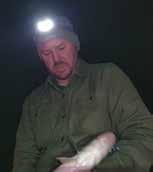
GET A GRIP. BEWARE THE FISH FLOP!
Being aware of your surroundings also plays into this point - make sure you have a good grip and realize this is a live animal you’re trying to wrangle for a photo. Its biggest priority is to slip that grip and escape back to the lake. Sometimes you’ll get lucky and that giant walleye or pike will be tired from a big fight and pose calmly and quietly. Other times you’ll let your guard down and a perfectly timed fish flop will put him back in the water or on the bottom of the boat leaving you with a bewildered expression and a blurry tailfin in your photo. Check out the social media feeds of some fishing pros and fishing guides and check out their poses and grips, and just know they suffer from the fish flop from time to time too.

Rylan Howe:
Bio: Rylan’s passion for photography was sparked as he earned his bachelors degree in journalism from the University of Kansas. He has developed his skills further while writing and photographing for the Iowa Information Media Group, including OKOBOJI Magazine, DISCOVER! and The N’West Iowa REVIEW since 2007. In 2022 Rylan opened his own studio to capture special moments for families called Rylan Howe Photography. facebook: Rylan Howe Photography | Email: rylan.howe@gmail.com | RylanHowePhotography.com






